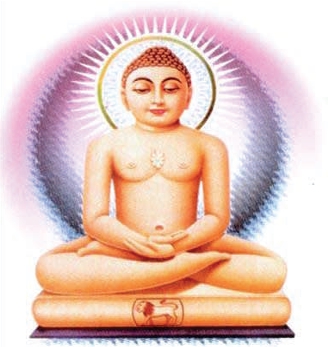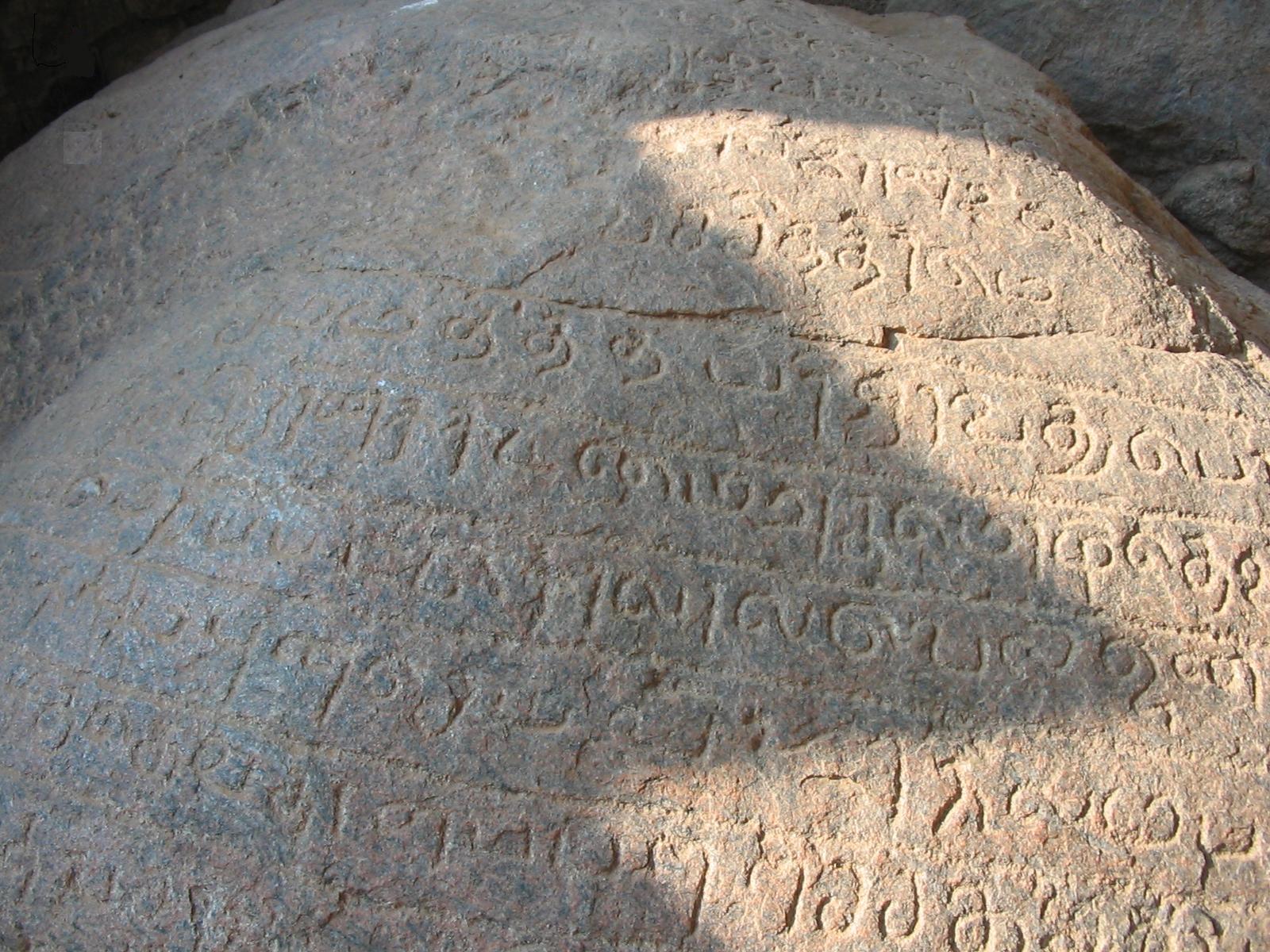
History of Jainism in Tamil Nadu (I)
Jainism might have reached Tamil Nadu, perhaps, a century after the nirvāṇa of Mahāvīra. The Buddhist chronicle, Maha-vamsa (mahā-vamśa; Ch. 10) states that the Sinhalese king, Pāṇḍukābhaya, built a temple for the Nigantha (nigaṇtha) Jotiya and another for Nigantha Kumbhamḍa. Nigantha is the pāli term for a Digambara monk.
The period of this king is the second half of the 5th century A.D. It is clear that during his time, Jainism was established in Ceylon. A comparative study of Prakrit words in Telugu-Kannada and Tamil-Malayalam groups showed that in the former, where there are Ardha-Magadhi (ardha-māgadhī) forms in certain situations, we find that in the latter group, there are borrowings from Magadhi. This shows that the preachers of Jainism, at least some groups of them, had come to these two regions from two different parts of India.
The possibility is that Jainism was spread in Ceylon - Tamil Nadu - Kerala regions by the same group. In that case, the missionaries might have reached Ceylon without touching the Andhra-Karnataka regions. Artha-śāstra mentions that there was a water route (sea-route) to Dakṣiṇāpatha (South India). Some of the Jaina missionaries from Eastern India might have taken that course to reach the Tamil Nadu - Kerala and Ceylonese areas.
 |
Row of seated Tirthankaras with tri-chattra, Sittanavasal Jain Cave Temple. |
There is a strong tradition that Viśākha-muni, at the instance of Bhadra-bāhu, sent missionaries from Shravana-belgola (śravaṇa-beḷgoḷa) to the Pandya (pāṇḍya) and Chola (cōḷa) countries. After the 10th century A.D., perhaps, Shravana-belgola acted as a centre for South Indian Jainism. That there was contact of other South Indian Jaina centres with this great centre of learning and pilgrimage, is proved by tradition and epigraphical evidences. But, in South India, Jaina inscriptions, belonging to a period before Christ, are found only in Tamil Nadu. These are found mostly in cave-dwellings, in the rocky hills in and around Madurai. Though these are not dated, on paleographical grounds, it is inferred that the earliest of these belongs to the 2nd century B.C.
Some of these caves are shaped into rooms with raised platforms, which might have served as beds for the recluses. On one end of the bed, pillows also are found cut from the rock. The inscriptions, mainly labels, giving the names of the sages who used those, or the devotees who made them for the monks, are mostly on the sides of the stone pillows. In these respects, these rock-cut dwellings bear similarity with their contemporary caves in Ceylon.
Tamil has a literary tradition, starting from the 2nd century B.C. This is called Sangam (saṅgam), Pkt./Skt. sangha (saṅgha) period, the upper limit of which is the 5th century A.D. This period was dominated by the Jaina writers. One of the five epic poems in Tamil, Cilap-patikāram, was written by the Chera (cēra) prince, Iḷaṅgo, who was a Jaina monk. The picture of contemporary Jainism is reflected in this work. Most of the minor works which belong to this period are Jaina.
There is a view that the Drāviḍa saṅgha, founded by Vajra-nandi, in Madurai, was a literary sangha. But this view is not supported by evidence. This was an organization of the monks like any other sangha all over India, and their activities were similar to those of the monks of other sanghas. Another sangha, which seems to have been founded in Tamil Nadu, the Vīra-saṅgha, has been mentioned in an inscription in Tiru-narungodai (tiru-naruṅgoḍai) in South Arcot. district. From inscriptional evidences, we find that there were other sects of Jainas in Tamil Nadu, but the Digambaras were dominant from the early period. There were the Yapaniyas (yāpanīya) at an early period. The Shvetambaras (śvētāmbara) were late to come.
 |
Lotus gatherer (wall painting, Pandya, 9th century CE), Sittanavasal Jain Cave Temple. |
Royal patronage gave Jainism in Tamil Nadu a boost in the early centuries of the Christian era. In almost all dynasties, we find that there were members, who were either believers of this religion or were tolerant to it. The Adiyamans (adiyamān) of Tagadur (tagaḍur; Dharmapuri) promoted Jainism. Adiyamān Neḍumān Añji (1st century A.D.) constructed a residence for the Jaina monks. He was celebrated by the Sangam poets, Paraṇar and Avvaiyār. He is known to be a Shaivite but his tolerance to Jainism is revealed by the inscription in Brahmi (brāhmī) characters in Jambai of Tiru-k-kōyilūr of South Arcot district.
Viḍukātalakiya Perumāḷ (11th century A.D.), a kin of the Kerala kings and Adiyamans of Tagadur, renovated a Jaina temple in Tirumalai. The images of yaksha (yakṣa) and yakshi (yakṣī) were installed by his kin, Elini of Vañji. The Western Gangas, though they ruled in the southern part of Karnataka, had contacts with Tamil Nadu and there are epigraphical evidences to show that these kings were enthusiastic about the establishment of Jainism in Tamil Nadu.
One inscription in Vaḷḷi-malai mentions the foundation of a shrine by the Ganga king, Rāja-malla II, son of Raṇa-vikrama (A.D. 877-907). Some of the Chera rulers might have been Jainas by conviction. A Brahmi inscription belonging to 3rd-4th centuries A.D., found in Pugalūr, in Karūr taluq of Tiru-c-cira-p-paḷḷi district, mentions that a Chera prince, Iḷam-Kaḍuṅko, son of King Perum-Kaṭuṅkōn, made a stone abode for the Jaina monk, Veṅkāyappan.
The Cholas were tolerant to all religions. Some of their vassals and officers were ardent Jainas. During the time of Parantaka I (parāntaka; A.D. 911-35), some donations were made to various Jaina institutions in Mēlkūḍalūr of Gingee taluq of South Arcot district.
Another inscription says that in Wandiwash, one Lāṭa-rāja-vīra-cōḷa (A.D. 993), who seems to have been the vassal of Raja-raja (rāja-rāja), made a gift to the god of Tiruppān-malai. Kundavai Pirāttiyār caused three temples to be constructed, of which one is Kundavai-Jinālaya, during the time of Raja-raja I (A.D. 1006), as mentioned in an inscription in Dādā-puram in Tindi-vanam (tiṇḍi-vanam) taluq of South Arcot district. During the time of Vikrama Chola (A.D. 1128), as is known from an inscription in Maḍaviḷāgam in Tindi-vanam, South Arcot district, a grant was registered for the maintenance of a feeding house, flower garden etc., for a Jaina temple.
 |
Rock inscription, Tirumalai Jain Temples. |
From an inscription in the Viṣṇu temple belonging to the period of Rāja-kēsari-varman (A.D. 1063), it is known that there was a monastery called Sundara-cola-p-penim-paḷḷi in ōlagapuram near Tindi-vanam. We understand that during the period of Parantaka I (A.D. 928), a grant was made to the Nāṭṭār-p-perum-paḷḷi in Vāḷaiyūr in Vāṇagōppāḍi, by one Sakkanvayiri. During the reign of Para-kesari-varma, according to an inscription in Toḍūr, in Gingee taluq (10th century characters), a chieftain, Viṇakōvaraiyan made some grants to the Valuvā-moli-p-perum-paḷḷi. During the reign of Raja-raja I (A.D. 1002), in the Appāṇḍinātha temple at Tiru-narungodai (South Arcot), an inscription has been engraved, which mentions that the commander-in-chief of the monarch made a grant to the temple on behalf of the king.
During the rule of Chola Rājādhi-rāja (A.D. 1031), a grant is made to the yakshi of Mēlir-paḷḷi. Chola Kulottunga (cōla kulōttuṅga) (A.D. 1070-1120) is historically introduced in an inscription in Tiru-narungodai. During the 8th regnal year of this monarch (A.D. 1078), another record is written to state that 40 cows had been donated for perpetual lamps in the shrine. In Paḷḷi-candal (South Arcot), an inscription of the period of Raja-raja-deva III (rāja-rāja-dēva) (A.D. 1222), refers to the Gaṇḍarāditta-p-perun-paḷḷi, which, according to scholars, was a Jaina institution named after the Chola monarch Gaṇḍarāditya. Kōnērinmai-koṇḍān donated land for the conduct of some festivals in Irungōla-p-pāḍi-nāḍu (Tiru-narungodai).
Another donative record of this king is available in the same place. Vikrama Chola has been introduced in detail and it is stated that in the year A.D. 1128 he registered tax-free lands for the expenses of the Vaikāśi festival to the gods, Aniṇmoli-dēva and Nityakalyāṇa-dēva, of Tiru-narungodai. Another grant of the same king to the temple is found. During the time of Raja-raja-deva II (A.D. 1155), Kiliyūr Malaiyamān made a grant to the temple for the worship of Appar and Pāliyil-ālvār of Tiru-narungodai. Kulōttunga III (A.D. 1178-1216) is mentioned in another inscription in the same place and stated that a grant was made to the Jaina temple.
 P.M. Joseph
P.M. Joseph